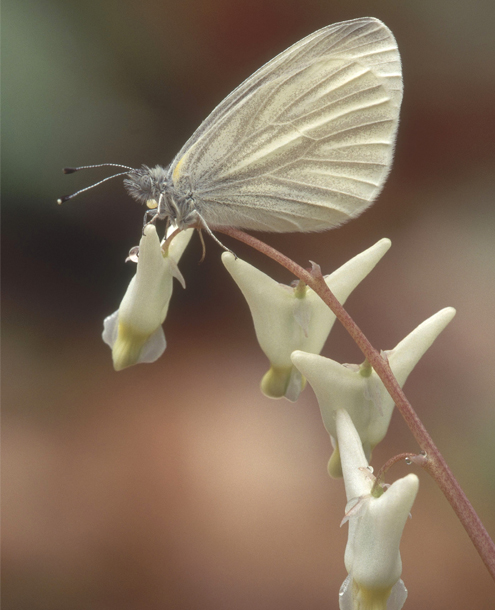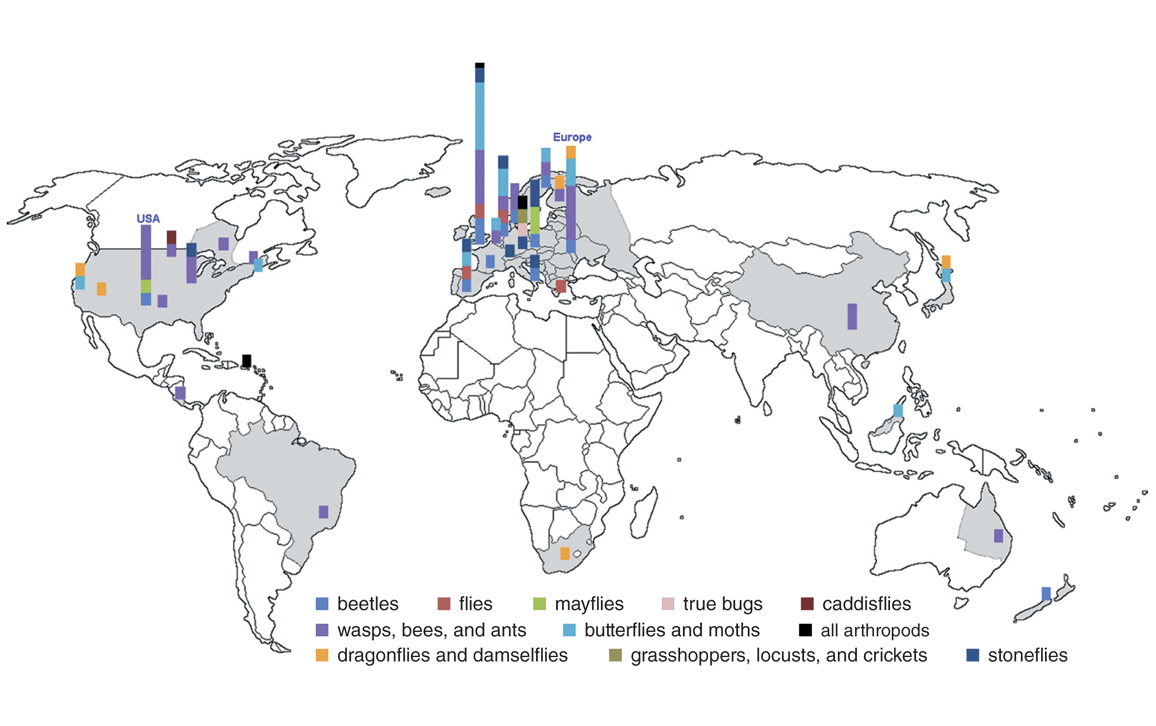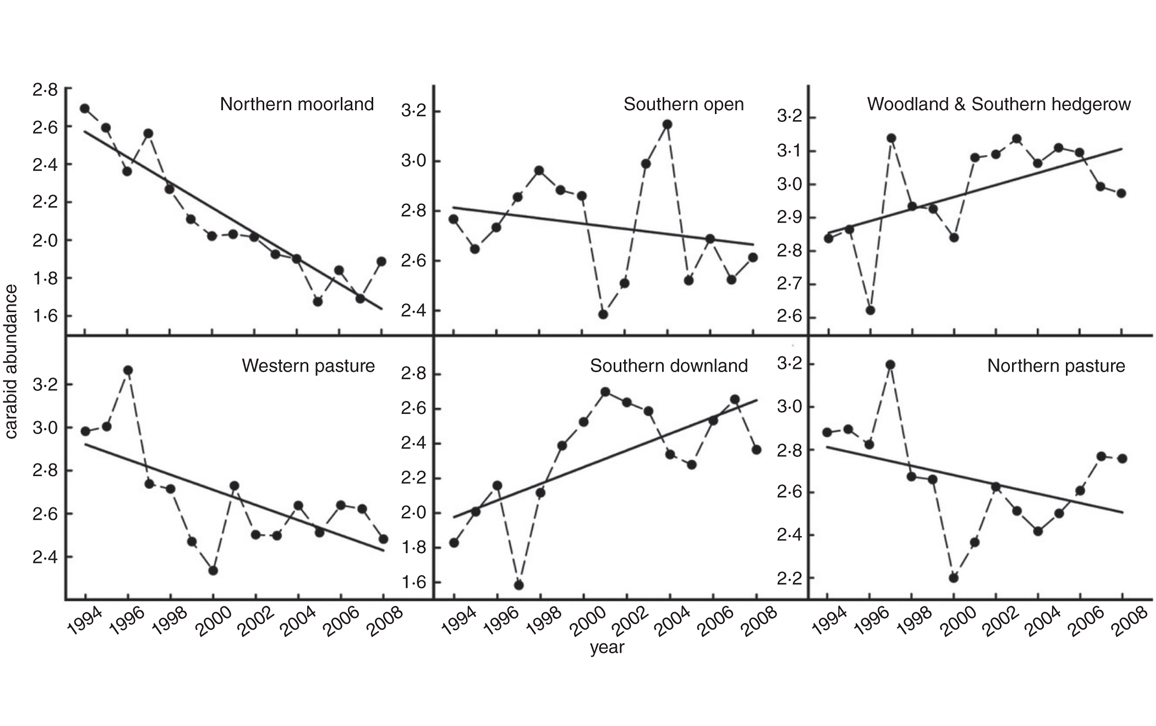No Simple Answers for Insect Conservation
By Manu E. Saunders
Media hype has missed the biggest concern that ecologists and entomologists have about six-legged life: how little we know about it.

Media hype has missed the biggest concern that ecologists and entomologists have about six-legged life: how little we know about it.

In late 2017, ecologist Caspar Hallmann of Radboud University in the Netherlands and his colleagues published an analysis of data from the Entomological Society Krefeld in Germany that showed a decline of more than 70 percent in flying insect biomass (the volume of living matter) over a 27-year period. A year later, ecologists Bradford Lister of the Rensselaer Polytechnic Institute and Andres Garcia of the Universidad Nacional Autónoma de México published a study from the Luquillo Experimental Forest in Puerto Rico suggesting a long-term decline in arthropod biomass and a restructuring of the area’s food web because of increased local temperatures. Earlier this year, Francisco Sánchez-Bayo of the University of Sydney and Kris Wyckhuys of the University of Queensland published a review paper provocatively titled “Worldwide Decline of the Entomofauna.”

Rod Planck/Science Source
As each study came out, the surrounding hype grew, filling broadcast and online platforms for popular-science news with a heady mix of hyperbole, anecdote, and speculation, including such dire phrases as “insect apocalypse,” “global ecosystem collapse,” “loss of all insects within 100 years,” and “collapse of entire food webs.” But these stories also claimed that our most hated pests, such as cockroaches and houseflies, would be the exceptions, set to boom out of control as all other insects disappeared.
Widespread, consistent insect declines are a real concern. Yet there is little published evidence that worldwide decline of all insects is happening. The aforementioned studies were localized and skewed toward particular taxa. The authors of the Krefeld and Luquillo studies tried not to overextend their results in their journal articles, but the press releases from the lead authors’ institutions, media coverage, and the recent review paper were less cautious. Sánchez-Bayo and Wyckhuys claimed that their review showed that “almost half of the [world’s insect] species are rapidly declining.” Yet their data show declines for only about 2,900 species—a tiny fraction of the estimated 5 million insect species on Earth.
Ecological patterns observed in one location are affected by complex interactions between local animal communities, regional attributes, human activities, and the study methods used, among other factors. This essential context is often considered too complicated to include in sound-bite stories. But when we overlook this complexity, we are ignoring the very information we need to take action to save threatened insect populations.
The Krefeld study is based on trap samples from 63 nature reserve sites in Germany, collected over a 27-year period. But more than half the sites were only surveyed once during the study period, and only 26 sites were surveyed in multiple, though not consecutive, years. The lack of repeated sampling at exactly the same locations over a long period of time limits understanding of the true extent of declines across Europe, let alone in the rest of the world. Moreover, biomass is a poor proxy for abundance or species richness.
Similarly, the Luquillo Forest study compared arthropod biomass from two sampling occasions in the 1970s with data from the same site collected in 2011 and 2012. Without knowing what happened during the intervening decades, it is hard to pinpoint the precise cause and extent of these declines. In addition, the authors sampled only a small area of the forest; their results for ground arthropods were based on a grid of sticky traps in an area measuring 30 meters by 24 meters. These sampling protocols are simply too limited to use to extrapolate evidence of widespread insect declines.
Rensselaer’s press release talked of Puerto Rico’s “decimated” insect populations, whereas the Radboud press release conflated the German study’s results with the authors’ speculation, claiming “a decline in other parts of the world too.” These compelling, albeit misleading, narratives were amplified further across various media covering the research, including news stories, opinion pieces, editorials, and commentary published on news platforms and in academic journals. Insect apocalypse quickly became embedded as an established concept in the popular- science lexicon. Any caveats about limitations or caution were mentioned briefly and buried deep in the story.
Agricultural intensification is a known causative factor in impoverished animal communities. So it is unsurprising that apparent declines were found in the Krefeld study, which was carried out in small nature reserves embedded in human-dominated agricultural landscapes. Many modern agricultural systems are characterized by regular disturbance, limited plant diversity, simple spatial organization of vegetation, and high input of synthetic fertilizers and pesticides. Nature reserves or protected areas embedded in agricultural landscapes, even those at distant locations that are connected by the movement of mobile animals, cannot escape these damaging effects.
The Puerto Rico study is a similar story. Prior to establishment of the Luquillo Forest Experimental Station in 1956 as a field station with the specific goal of studying the effects of disturbance on tropical forests, the land there was used for logging and agriculture. Both deliberate and natural disturbances continued after the station’s inception, including ecologist Howard Odum’s forest radiation experiments in the 1960s, herbicide and cutting experiments in the 1970s, road construction, and hurricanes. We know that such disturbances affect ecological communities. Lister and Garcia mention hurricane history in their paper as part of the broader climatic perturbations that were affecting their study system, but they only tested the effect of temperature and did not discuss the potential influence of other disturbances.
Insect populations are never truly stable. They fluctuate in response to multiple factors, including resource availability, climatic conditions, interactions with other organisms, and disturbances. Most insects have short, seasonal life cycles, large generations, and complex reproductive strategies—and different life stages can inhabit vastly different habitats and require different food resources. Cyclic fluctuations in insect populations are common, and are often influenced by resource pulses or disturbances. Any two insect species can respond in contrasting ways to the same driver. The effects of these factors can be complex and dynamic, and only gradual collation of research records over time can begin to reveal key components of the story. Studies based on data collected only a handful of times in nonconsecutive years may overlook important pieces of the population puzzle.
If one sifts through studies of insect populations, complexity is found at every turn. A 2009 study by entomologist Chris Shortall of the nonprofit Rothamsted Research and his colleagues analyzed almost 30 years of trap data from four sites in the United Kingdom monitored by the Rothamsted Insect Survey, one of the few long-term, dedicated insect-monitoring programs in the world. They found significant declines overall in large insects, particularly large flies, but no significant trends for other groups, such as aphids. Results also varied between locations. A 2015 study by James Bell of Rothamsted Research and his coauthors focused on aphids and showed that long-term population trends are complex and noisy. No significant overall increase or decline was identified.
Contrasting patterns can be the result of different habitat attributes. Carlos Herrera of Estación Biológica de Doñana recently published a long-term study of pollinator communities in a well-preserved mountain habitat in southeastern Spain. Despite concerns about pollinator declines in agricultural habitats, he found pollinator increases, especially for solitary bees.
Focusing on individual species allows even greater understanding of these complex processes. For example, the West Virginia white (Pieris virginiensis) is a rare butterfly restricted to mature forests in the northeastern United States. Increasing logging, grazing pressure, and invasive species are thought to be threatening this insect. However, no long-term study of P. virginiensis populations exists, partly because the species had long been assumed to be P. oleracea. And for around half a century, the few studies of P. virginiensis concentrated on documenting its biological or physiological attributes.
A number of drivers contribute to potential declines of P. virginiensis. The invasive garlic mustard, Alliaria petiolata, acts as an ecological trap: Female butterflies are attracted to lay their eggs on the plant, but larvae can’t survive on it. The parasitic wasp Cotesia glomerata, which was introduced to the United States to control the crop pest P. rapae, also attacked native species such as P. virginiensis.
Samantha Davis’s 2015 dissertation at Wright State University in Ohio found that the conservation status of this butterfly is currently secure, but a number of known threats and knowledge gaps need to be addressed to confirm its future. Similarly complicated stories would be found for many other insect species, but only with this kind of detailed research on populations over time.
It is extremely difficult to verify global insect declines. Limitations and knowledge gaps show up in the review by Sánchez-Bayo and Wyckhuys. They used a limited, selective search for papers that was biased toward ones containing the word decline. Their search protocol would not have picked up the broader range of studies showing long-term fluctuations, population increases, or stability, because they didn’t include these terms.
Some taxonomic groups, particularly charismatic species such as monarch butterflies, are known to be declining in some parts of the world, predominantly in Western Europe, the United Kingdom, and North America. But the state of insect populations across much of the Southern Hemisphere and in more remote parts of the world is a mystery. For many insect taxa—such as cockroaches, most fly and beetle families, most crickets and katydids, cicadas, earwigs, and termites—the authors simply found no data.
Lack of data is a serious problem for insect conservation. Entomologists and ecologists have been voicing concerns about the holes in our knowledge of global insect diversity for many years. The lack of published data on insect population dynamics is likely the result of multiple biases within the publication system. Many academic journals are averse to publishing null results, such as no documented changes in an insect population. High-profile journals often consider observational studies as lacking the rigor necessary for publication, even though many such studies provide important clues to understanding insect populations. Therefore, these studies are often published in local or obscure natural-history journals, if at all. These obscure journals are vital to our scientific knowledge, but unfortunately many are not available online or through standard academic databases.

From F. Sánchez-Bayo et al., Biological Conservation 232:8.
Research funding and conservation concern have historically favored charismatic species and more recognizable taxonomic groups, particularly mammals and birds. People often think of arthropods as creepy, scary, nasty creatures that need to be killed or excluded from our lives. And our dependence on agriculture has encouraged a common misconception that most insects are damaging pests that will deplete our food supply. Indeed, the most commonly studied herbivorous insects are the most abundant economic pests, stealing the spotlight from the vast majority of other species that are often locally rare. No wonder we have such limited knowledge of the most abundant and diverse group of animals on Earth. But the insect apocalypse coverage has simply ignored these important discrepancies in our knowledge.
The more worrying story is how little we know about the ecology and distribution of the vast majority of insects. Why are some species declining and some increasing? Why do declines and increases happen periodically? Why do some species decline and then recover? How do alien or range-expanding insect species affect native populations? How do insects contribute to different ecosystem services? If we want to save insects, we need to investigate these questions.

From D. R. Brooks et al. 2012. Journal of Applied Ecology doi:10.1111/j.1365-2664.2012.02194.x)
Because even closely related species can have different habitat needs and life cycles, we cannot assume that existing knowledge of well-studied species translates to other insects. We already have an imperative to reduce the broader effects on ecosystems from climate change, pollution, and land clearing. But detailed knowledge of the range of responses insects show in the face of these problems, and the potential consequences of their loss, are essential to effectively conserve the incredible diversity of insect life around us.
The more worrying story is how little we know about the ecology and distribution of the vast majority of insects.
Ecology, as a discipline, has spent the greater part of a century fighting to be acknowledged as an empirical science, not just a collection of anecdotal observations. An anecdote is a product of local conditions and individual perception. Anecdotes are a valuable storytelling tool for connecting with audiences. They can also be useful springboards for research hypotheses. But as data points, they are unreliable without context. In the case of insect populations, a statement that someone has observed fewer insects in their backyard this summer has limited value. For how many summers has this person been observing insects in their backyard? What environmental disturbances have happened in their local area? What have the weather conditions been like? Yet in the insect apocalypse coverage, isolated observations of local insect dynamics have often been presented as evidence of global declines.
Some people have also been noticing local insect increases, although these anecdotes rarely make the news. For example, my mother is a keen gardener who has spent the past 40-odd years in the same house. Recently she was excited to find that many of the insects she hadn’t seen for years had inexplicably appeared again—giant stag beetles, birdwing butterflies, and native bees. We don’t know why. A couple of years ago we were lucky enough to experience a population boom of syrphid flies in southeastern Australia. It was magical to walk through clouds of these dainty golden flies, ducking and rolling in unison like miniature fighter jets. These syrphid booms apparently occur in semiregular cycles, perhaps in response to favorable environmental conditions, but there is very little published knowledge of these dynamics. These anecdotal increases do not falsify the hypothesis that insects are declining, just as anecdotal decreases do not prove it.
Throughout the insect apocalypse saga, some commentators have implied that it is acceptable to use limited or flawed data to grab public attention on a serious issue if doing so means that necessary action will be taken. Insects are receiving the most positive widespread attention they’ve had in a long time. And no one would deny that insects are desperately in need of some good public relations. Shouldn’t we just run with this hype?
This conclusion is a red herring. As scientists, our role is to endorse precision and accuracy. An important part of ethical science is upholding communication standards that accurately convey complexity and context, as well as data and results.
The studies behind the insect apocalypse story don’t show evidence of overall global insect declines. Instead, they provide examples of how humans can have cascading effects on biodiversity and ecosystem function. That humans are changing the Earth in damaging, often dangerous, ways is undeniable. Forest clearing, pesticide overuse, agricultural intensification, and fossil-fuel production have severe effects on ecosystems, including the smallest of animals. Understanding the complexity of species and ecosystems is a first step to knowing how we can reverse this damage. The take-home message from these stories should not be one of apocalypse, but one of diversity, interactions, and an urgent need for inquiry.
Click "American Scientist" to access home page
American Scientist Comments and Discussion
To discuss our articles or comment on them, please share them and tag American Scientist on social media platforms. Here are links to our profiles on Twitter, Facebook, and LinkedIn.
If we re-share your post, we will moderate comments/discussion following our comments policy.